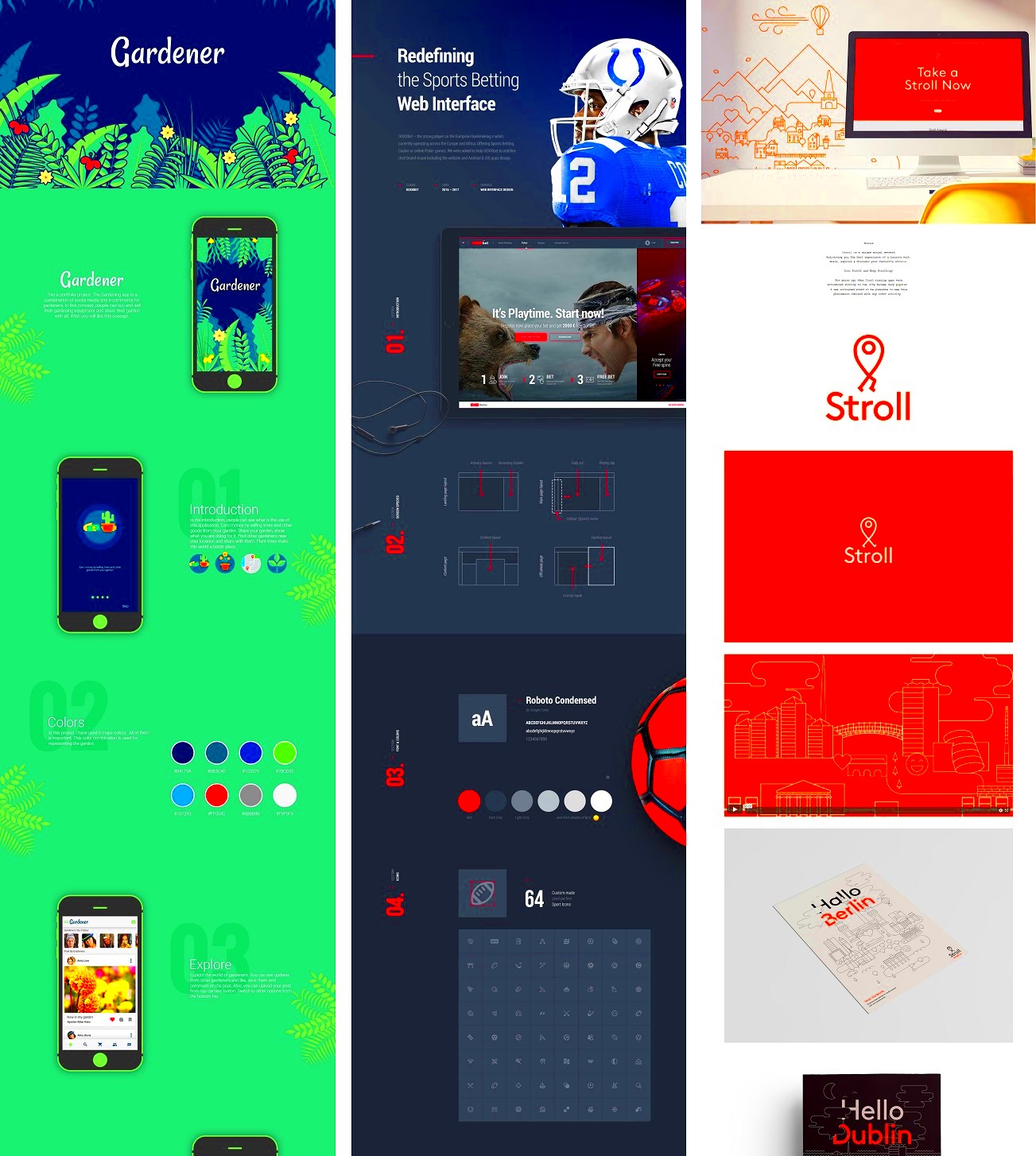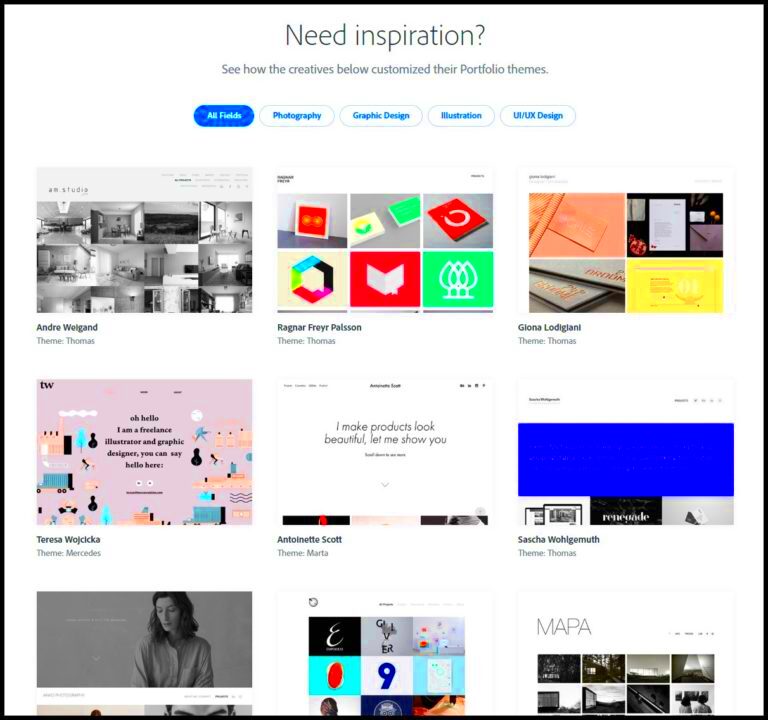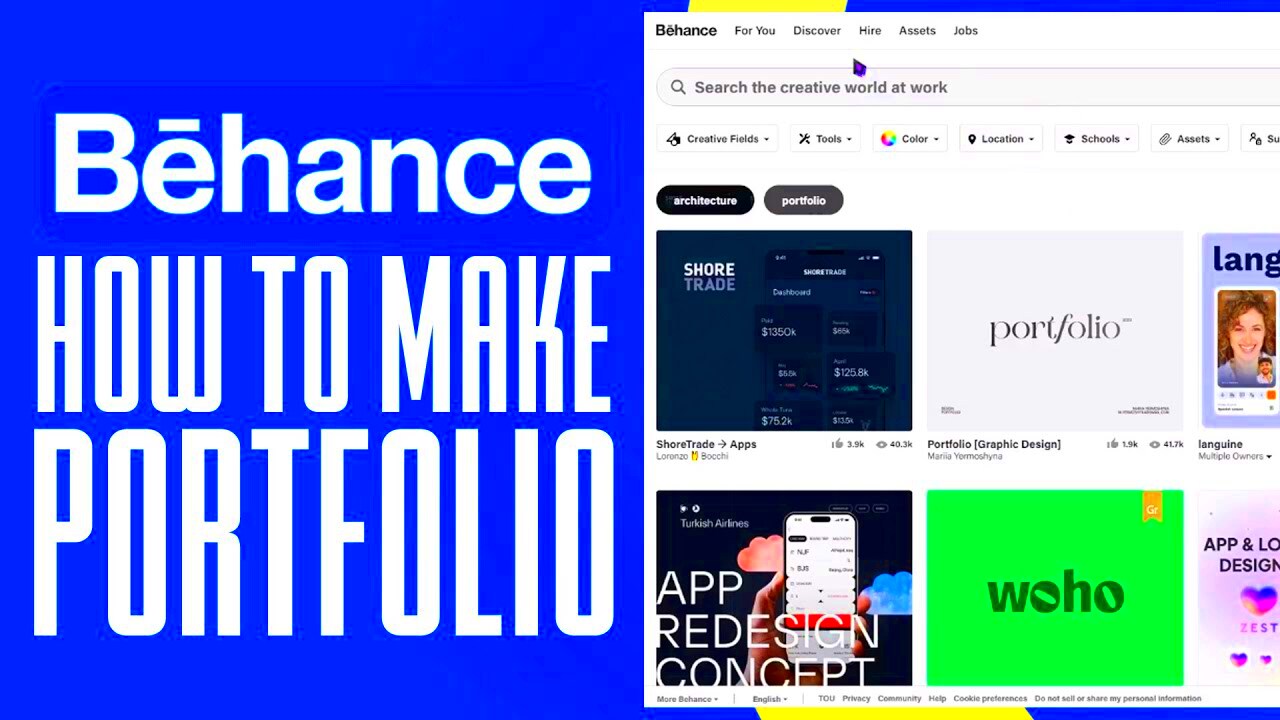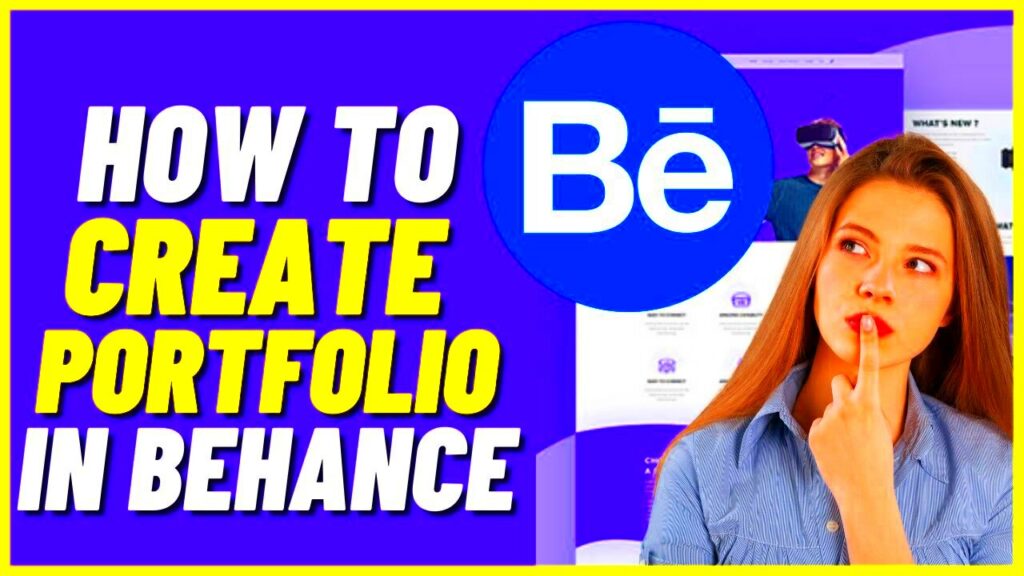When I embarked on my journey as a creative freelancer I soon discovered that a portfolio was akin to possessing a ticket. Your Behance portfolio goes beyond being a mere assortment of your creations; it embodies your essence as a creative individual. It acts like a greeting extending to potential clients and employers an insight into your unique flair, expertise and character.
Think of it like stepping into an exhibit that displays your finest creations. Your portfolio serves as a narrative of your growth and development as a designer, photographer or artist. In a world filled with creativity a compelling portfolio has the power to set you apart. Here are some reasons why it holds significance.
- First Impressions Matter: Your portfolio is often the first thing a client sees. Make it count!
- Showcases Your Skills: It’s not just about pretty pictures; it’s about demonstrating your range and expertise.
- Builds Your Brand: Consistency in style and presentation helps in establishing your unique brand identity.
- Attracts Opportunities: A well-curated portfolio can lead to job offers, collaborations, and freelance gigs.
Basically having a solid Behance portfolio is like putting money into your professional journey. Its definitely worth dedicating some time to create something that genuinely reflects who you are.
Getting Started with Behance Account Setup

Creating a Behance account is a breeze! I can still recall the thrill I experienced when I set mine up for the time it felt like stepping into a world of possibilities. To kick things off just follow these straightforward steps.
- Visit Behance.net: Go to the website and click on "Sign Up".
- Choose Your Method: You can sign up using your email or through social media accounts like Facebook or Google.
- Complete Your Profile: Fill in your profile details. Add a friendly profile picture and write a bio that reflects your personality.
- Connect with Other Creatives: Behance allows you to follow other artists. It’s a great way to get inspired!
After you get your account ready, take some time to check out the platform. Get to know its different features and start brainstorming ideas on how to showcase your projects. This is just the beginning of your adventure on Behance and believe me it will be an exciting ride!
Also Read This: How to Sell Photography on Shutterstock and Stand Out
Choosing the Right Projects to Showcase

Picking the projects to highlight is a bit like looking in a mirror and deciding what outfit shows your true self. It’s all about finding the balance between being genuine and being smart. Based on what I’ve learned here are a few suggestions to assist you in choosing the projects that will stand out the most.
- Quality Over Quantity: It’s better to showcase a few outstanding projects than to clutter your portfolio with mediocre work.
- Diversity is Key: If you have a range of styles or mediums, don’t hesitate to display them. It shows your versatility.
- Show Your Process: Include work-in-progress shots or sketches. This gives potential clients insight into your creative process.
- Align with Your Goals: Think about the type of work you want to attract. If you’re aiming for graphic design gigs, focus on that area.
Seeking input from colleagues or mentors can be beneficial too. Your perception of your work might not always align with how others perceive it. Keep in mind that your portfolio is a dynamic representation. Don't hesitate to refresh it as you progress and develop your skills.
Also Read This: How to Delete Adobe Stock Files and Remove Unwanted Assets from Your Library
Organizing Your Projects for Maximum Impact

When it comes to showcasing your projects on Behance consider it like putting together an art gallery. I recall how nerve wracking yet thrilling it was to organize my pieces for an exhibition. A thoughtfully arranged portfolio not grabs the attention of your viewers but also ensures smooth browsing. Here are a few tips that have proven effective for me.
- Create Categories: Divide your work into distinct categories based on the type of projects—like graphic design, photography, or illustration. This helps viewers find what they’re interested in quickly.
- Highlight Key Projects: Pin your standout projects at the top. These should be your best work, demonstrating your skill and creativity.
- Maintain a Consistent Layout: Use similar formats for project presentation. Consistency in design makes your portfolio feel cohesive and professional.
- Sequence for Storytelling: Arrange projects in a way that tells a story. For instance, you could show the progression of a project from concept to final outcome.
Moreover dont forget to periodically assess and update your portfolio. As you develop your abilities your showcase should evolve too. Make it lively and captivating to mirror your progressing path as a creator.
Also Read This: How to Perform Magic with Paper on Dailymotion
Writing Engaging Project Descriptions
Project descriptions offer an opportunity to engage with the audience more profoundly. Instead of simply outlining your actions it involves conveying the emotion and consideration that went into your project. I came to realize this through experience as my initial descriptions tended to be rather dull and unexciting. Here are the insights I have gained since then.
- Start with a Hook: Grab attention with an interesting fact or a personal anecdote related to the project. For example, you might share what inspired you to start a particular piece.
- Explain Your Process: Dive into how you approached the project. Discuss the challenges you faced and how you overcame them.
- Use Clear Language: Avoid jargon unless absolutely necessary. Write in a way that anyone can understand, whether they are an expert or a layperson.
- Invite Feedback: Encourage viewers to share their thoughts on your work. This not only fosters engagement but also builds a community around your art.
Basically project descriptions ought to come across as a chat. Show off your unique style and dont hesitate to share your excitement for the job!
Also Read This: Effective Strategies to Avoid the Rumbling in Blox Fruits and Protect Your Team
Utilizing Visuals Effectively in Your Portfolio
The visuals play a crucial role in showcasing your work on Behance. When I first started my creative path I didn't fully grasp the impact of visuals. However as I developed my craft I came to understand that a captivating image conveys a message. Here are a few suggestions to make the most of visuals:
- High-Quality Images: Always upload high-resolution images. Blurry or pixelated visuals can detract from the overall quality of your portfolio.
- Use Mockups: For design projects, use mockups to show your work in context. This gives potential clients a better understanding of how your designs would look in real life.
- Include Detail Shots: Don’t just show the final product; include close-ups or behind-the-scenes images that highlight your technique and craftsmanship.
- Consistent Style: Strive for a uniform visual style throughout your portfolio. This could be achieved through color palettes, filters, or framing.
Additionally dont forget to weave a narrative through your visuals. Every picture should not serve as a depiction of the project but also stir emotions and captivate the viewers. The perfect visuals have the power to transform a mundane portfolio into something truly remarkable.
Also Read This: Access Premium Content: Download Getty Images Without Watermark
Sharing and Promoting Your Behance Portfolio
Building an impressive Behance portfolio is only the first step. The true impact comes when you showcase it to others. I still recall the excitement of revealing my portfolio for the time; it was like exposing a part of my essence. Here are some strategies to effectively promote your creations and gain recognition.
- Leverage Social Media: Share your projects on platforms like Instagram, Facebook, and Twitter. Use relevant hashtags to reach a broader audience. I found that posting behind-the-scenes snippets on Instagram stories generated excitement for my work.
- Engage with the Community: Behance is a community, so interact! Comment on others’ work, join discussions, and participate in challenges. This builds relationships and increases visibility for your own portfolio.
- Create a Personal Website: Consider setting up a personal website to showcase your portfolio. A unique domain adds professionalism and gives you a space to control your brand.
- Network Offline: Don’t underestimate the power of face-to-face interactions. Attend local art and design meetups, workshops, or exhibitions. Share your Behance link with fellow creatives.
In the end, it's all about making connections and telling your story when it comes to promoting your portfolio. Be authentic in your approach and keep in mind that every interaction is a chance to highlight your love for what you do.
Also Read This: How to Replay YouTube Videos on Your iPhone
Tips for Maintaining and Updating Your Portfolio
Keeping your Behance portfolio updated is similar to nurturing a garden. Just as flowers require care to flourish your portfolio needs focus to succeed. I’ve discovered that refreshing and staying current is crucial for captivating your audience. Here’s what I find effective:
- Regular Updates: Make it a habit to review your portfolio regularly. Add new projects and remove older ones that no longer represent your current skill level.
- Seasonal Refresh: Consider doing a seasonal update where you revisit your past work and refresh descriptions, images, or even the layout. This keeps your portfolio dynamic.
- Seek Feedback: Don’t hesitate to ask peers or mentors for their opinions. Sometimes, an outside perspective can highlight areas for improvement that you might miss.
- Stay Current: Keep an eye on design trends in your field. Adapt your portfolio to reflect current aesthetics while maintaining your unique style.
Ultimately a thoughtfully curated portfolio not only opens doors to new opportunities but also acts as a testament to your personal growth. It captures your evolution as a creative and highlights how you progress over the years.
Also Read This: Canva Image Combining
Frequently Asked Questions about Behance Portfolio Creation
While exploring my path on Behance I frequently came across questions that seemed to arise time and again not just for me but also for other creative minds. Here are a few of the queries that come up along with my thoughts on them.
- How many projects should I include in my portfolio? There’s no hard and fast rule, but focus on quality over quantity. Aim for 5-10 well-curated projects that truly represent your skills.
- Can I update my portfolio after it’s published? Absolutely! Regularly updating your portfolio is essential for showcasing your growth. Don’t hesitate to revise project details or add new works.
- What should I do if I don’t have much experience? Start with personal projects or volunteer work. Even hypothetical projects can showcase your skills and creativity. Everyone starts somewhere!
- Is it necessary to have a professional photo for my profile? While it’s not mandatory, a friendly, professional photo can make a good impression. It adds a personal touch and helps viewers connect with you.
Keep in mind that building a portfolio is an experience rather than a goal. Embrace the growth that comes with it and take pleasure in showcasing your creative ideas to others!
Wrapping Up Your Behance Portfolio Journey
As I take a moment to think back on my time with Behance I can't help but feel a rush of appreciation. Putting together a portfolio goes beyond gathering up projects; it involves stitching together the tale of your artistic journey. Every project carries a narrative of nights spent doodling, numerous edits and flashes of inspiration that ignited my enthusiasm. It's a rich blend of experiences setbacks and victories that have molded me into the designer I am today.
During this journey, I've gained insights that I think could be helpful for anyone starting their own Behance journey
- Embrace Authenticity: Let your true self shine through in your portfolio. Don’t be afraid to show your personality, as it’s what makes your work unique.
- Stay Open to Growth: Your portfolio is a living document. As you grow and evolve, so should your portfolio. Be willing to adapt and change your approach.
- Build Connections: Behance is not just a platform to showcase your work; it’s a community. Engage with others, share feedback, and form connections that can lead to exciting opportunities.
- Celebrate Your Achievements: Don’t forget to acknowledge your progress, no matter how small. Each project completed is a stepping stone in your creative journey.
To sum it up your Behance portfolio is like a mirror showing your creative path. Its a strong asset that not only highlights your skills but also brings in fresh possibilities. So, embrace the journey continue growing and let your enthusiasm shine in every project you present!
